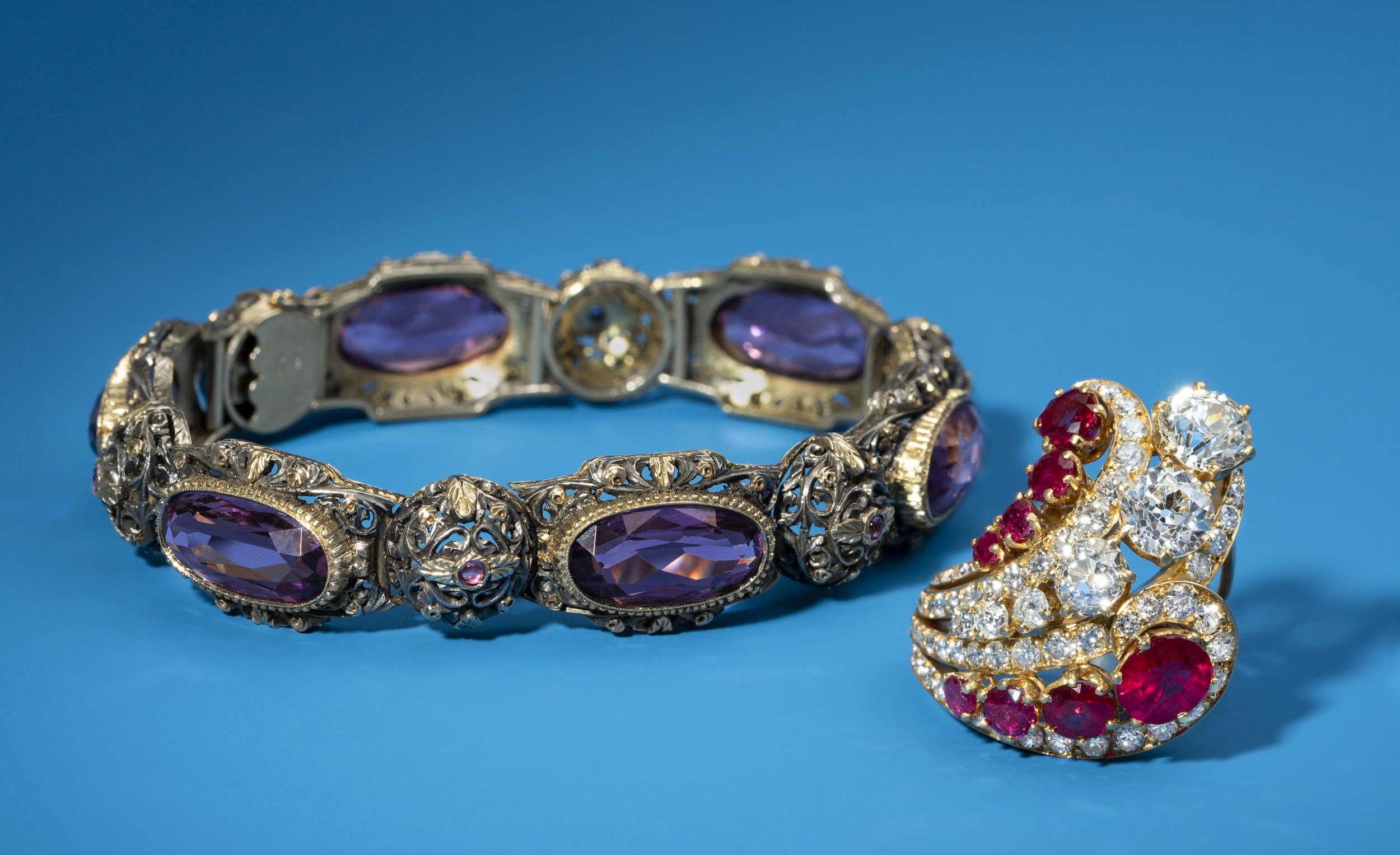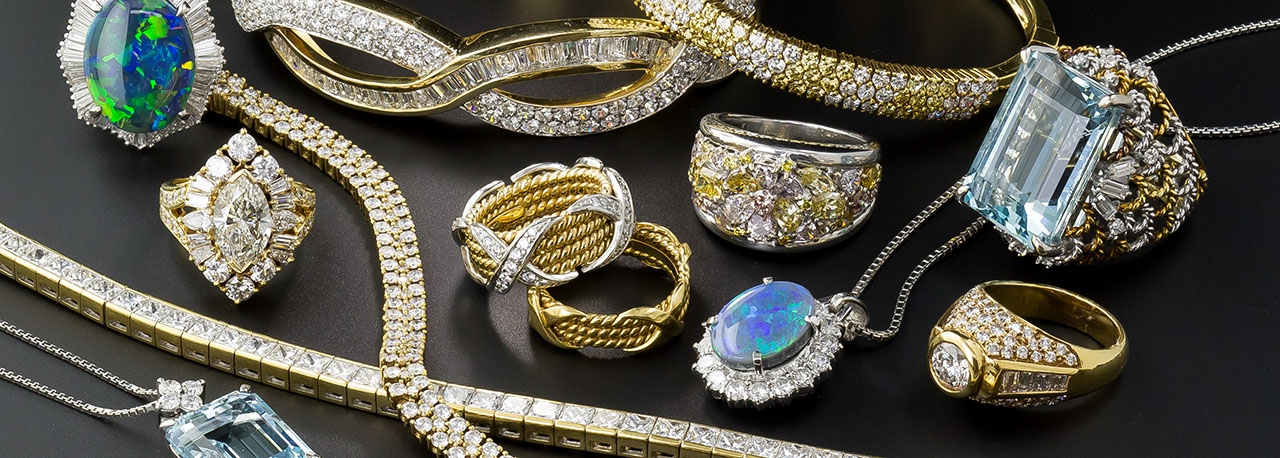Uncover the Rich Background Behind Stunning Estate Precious Jewelry Collections
The exploration of estate precious jewelry collections uses an unique window into history, exposing the detailed partnership between workmanship and social development (estate jewelry austin). Each piece is not simply a testament however an adornment to the creative activities and societal values of its time, from the luxuriant details of the Victorian age to the structured sophistication of the Mid-Century Modern. As we check out these amazing artefacts, we discover stories that go beyond generations, motivating us to take into consideration not just their appeal, however the lives they have touched and the moments they have actually observed. What tricks might these collections still hold?
The Beginnings of Estate Fashion Jewelry
Exactly how did estate precious jewelry involved embody the abundant history and artistry of past periods? The beginnings of estate fashion jewelry can be mapped back to different periods of workmanship, where fashion jewelry was not merely an accessory yet a reflection of social values, technical improvements, and artistic expressions. Each item tells a tale, commonly related to the lives of their previous proprietors, encapsulating individual narratives along with historical contexts.
The term "estate jewelry" commonly refers to secondhand pieces, usually from significant ages such as Victorian, Art Nouveau, or Art Deco. These items were created with precise focus to detail, showcasing the ability of craftsmens who utilized materials like gold, silver, and priceless gems. Unlike modern jewelry, estate items usually feature distinct styles that highlight the aesthetics of their time, thus working as substantial links to the past.

Notable Design Periods
Throughout background, a number of remarkable layout periods have considerably influenced the advancement of estate precious jewelry, each defined by distinctive designs, materials, and social contexts. The Georgian period (1714-1837) marked the beginning of detailed styles, typically including nature-inspired themes and using products like gold, silver, and gems embeded in intricate setups. Following this, the Victorian era (1837-1901) introduced romantic motifs, with emotional jewelry and cutting-edge methods such as the usage of enamel and cameos.
The Art Nouveau duration (1890-1910) celebrated organic kinds and the charm of nature, utilizing products like opals and pearls in flowing layouts. This was been successful by the Art Deco period (1920-1939), which welcomed geometric patterns, strong colors, and lavish materials such as platinum and rubies, showing the modernist spirit of the moment.
The Mid-Century Modern era (1940-1960) showcased structured styles and using unusual materials, stressing minimalism and functionality. Each of these ages not just shows the creative activities of their time yet also envelops the social values and technical advancements that shaped fashion jewelry design, making them an interesting topic for chroniclers and collectors alike.

Famous Estate Fashion Jewelry Collections
The abundant history of estate fashion jewelry is magnificently exhibited by numerous popular collections that showcase the virtuosity and workmanship from various style ages. Among one of the most famous is the Cartier Collection, which shows the deluxe and innovation of the renowned French jewelry expert. Parts from this collection usually feature elaborate styles and elegant gemstones, highlighting the brand name's dedication to great workmanship.
An additional notable collection is the Duchess of Windsor's jewelry collection, which comprises several distinctive pieces, including the iconic "Windsor" bracelet. This collection not only exemplifies the beauty of the Art Deco period but also carries an abundant story of love and loss, as it came from Wallis Simpson, who notoriously wed Edward VIII.
The collection of the late starlet Elizabeth Taylor additionally attracts attention in the world of estate precious jewelry. With many pieces made by renowned jewelry experts like Bulgari and Cartier, her collection personifies beauty and elegance, highlighting her individual design and affinity for distinct gemstones.
These popular estate jewelry collections offer as a testament to the long-lasting appeal of great fashion jewelry, offering understanding into the imaginative and cultural activities that formed their development.
The Social Importance
Estate fashion jewelry collections hold extensive cultural value, showing not only the aesthetic worths of their particular eras however likewise the historic and social contexts in which they were created. Each piece often personifies the workmanship and artistic patterns of its time, showcasing the development of layout and technology in fashion jewelry production.
Additionally, these collections act as tangible links to social customs and rituals. For circumstances, wedding event bands and heirloom brooches might signify love and domestic bonds, while pieces embellished with details gems can represent regional or social identifications. The materials utilized-- whether gold, silver, or jewels-- commonly tell stories of trade, expedition, and the wide range accumulation of societies.
Additionally, estate fashion jewelry can work as historical artifacts, offering insights right into the lives of individuals and the social standards they navigated. The way precious jewelry was used and valued can expose much about sex functions, condition, and individual expression within try this site differing social landscapes. Because of this, estate jewelry transcends simple embellishment, acting as a rich narrative of human experience, virtuosity, and social heritage, inviting contemporary target markets to involve with the past in a significant way.
Caring for Your Estate Pieces
Caring for estate jewelry items requires a thoughtful method to ensure their durability and preserve their unique qualities. Always clean estate precious jewelry using a soft, lint-free towel after each wear to remove oils and dust.
Storage is similarly important; shop items independently in a fabric-lined box to prevent scratching and entangling. Think about making use of anti-tarnish pouches or towels for silver items, as this assists to reduce the tarnishing procedure. In addition, avoid revealing jewelry to extreme moisture, severe temperature levels, or direct sunlight, which can adversely influence steels and gemstones.
Consulting a jewelry expert experienced in vintage or antique items can give specific treatment choices. By executing these practices, collectors can preserve their estate fashion jewelry's historical and visual value, ensuring these items continue to be valued for generations to come.
Conclusion
Finally, the exploration of estate fashion jewelry collections discloses a tapestry of artistic Going Here expression and social value, mirroring the values and appearances of different historic periods. Once owned them, each piece serves as a testament to remarkable craftsmanship and the narratives of those who. Comprehending the beginnings, style ages, and significant collections improves recognition for these artifacts, highlighting their function in preserving social heritage and motivating ongoing stewardship and look after these impressive prizes.
The exploration of estate jewelry collections supplies an unique home window right into background, exposing the elaborate relationship in between workmanship and cultural evolution. The origins of his explanation estate precious jewelry can be mapped back to different periods of craftsmanship, where precious jewelry was not simply an accessory yet a representation of societal values, technical improvements, and artistic expressions.The term "estate jewelry" commonly refers to secondhand pieces, frequently from substantial ages such as Victorian, Art Nouveau, or Art Deco.The rich background of estate fashion jewelry is beautifully exhibited by a number of renowned collections that display the virtuosity and workmanship from various layout eras.In verdict, the expedition of estate precious jewelry collections exposes a tapestry of artistic expression and social relevance, showing the worths and looks of various historic durations.